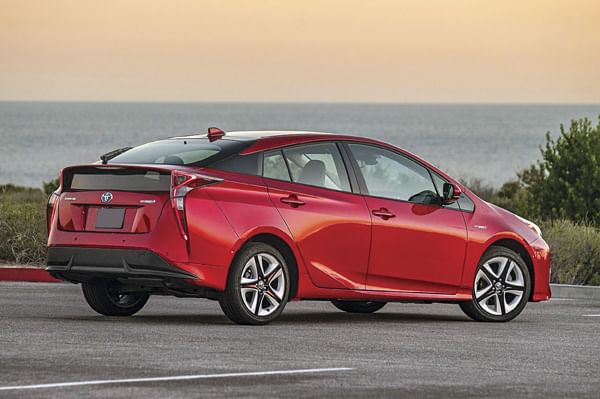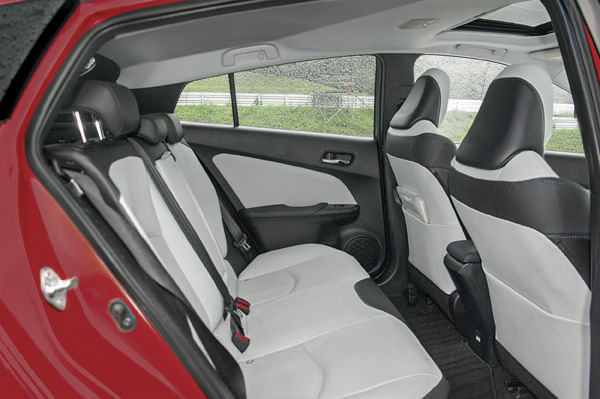Toyota’s Prius is a car that elicits a number of emotions. There’s respect to begin with, it is something of a technological marvel, there’s admiration for its global success, and it’s sort of cool too; it really is the template for the kind of car we’ll all be driving in the not too distant future.
But the Prius is also a car that elicits a lot of indifference, mostly because of how cold and unexciting this car is, both to drive and to look at.
Now Toyota want to change all that with its brand spanking new Prius. Yes, the Prius is the world’s first mass-produced petrol-electric hybrid, and this means it has its place in history, but the carmaker also wants Prius owners to enjoy the drive. This is why it has brought us to the F1 race track, under the shadow of the giant Mount Fuji volcano in rural Japan. We aren’t on the main circuit, thankfully, and there’s enough rain to douse the embers in Mount Fuji’s caldera, but the handling circuit is quite challenging and I’m quite keen to see how well the new Prius goes around corners.
The first thing I notice is that the driving position is lower, and the rest of the car seems lower slung too. The new Prius gets an independent rear suspension, because it has to compete with sharp-handling European cars, according to the engineer on hand, and the chassis is also a huge 60 percent stiffer than the earlier car. Those familiar with the Prius on the inside will find the layout of the dash to be similar but better equipped, but that silly-looking gear lever (that’s supposed to look high tech) is still there.

Anyway, we are on a track, so I select the sportier setting and put my foot down. I immediately feel the strong push of the electric assist and there’s a bit more oomph here when the 1.8 petrol engine gets into its stride, so it feels a bit quicker in a straight line than the earlier car. And there’s a surprisingly nice shove in the back all the way past 120kph, which comes as something of a surprise. As we pick up the pace, however, I’m struck by just how devoid of feel the regenerative brakes are initially, and though the steering feels much improved over the earlier car’s ‘shopping trolley’-like helm, turning into a wet corner and carrying a decent amount of speed into it is initially quite a challenge. I later discover the tyres are just low rolling resistance 195s!
So building confidence is a lengthy process. Strangely though, I find that the harder and smoother I drive it, the better it feels. I was expecting it to metaphorically fall apart when driven quicker, but the Prius – much to my surprise – has a decent balance to it. And though the ESP keeps cutting in and the nose keeps searching, often in vain, for grip, this new car does feel a bit more entertaining to drive. It’s no Tesla though, nowhere near, and though the American electric car isn’t focused on efficiency, I would have liked a bit more engagement from the new Prius.
What I enjoy a bit more, however, is driving back on part throttle, where the rubber-band effect is less, the petrol engine is in a more comfortable place in the powerband and refinement levels are much higher. So in the real world, the Prius should be much nicer to drive; I can’t wait to test the car back home.

When we tested the previous Prius, we’d hinted that the best place to be was in the back seat. This isn’t really the case with the new car, because it feels much nicer to drive. But what’s stayed the same is the very practical and usable rear bench, which actually makes the Prius a super car to be chauffeur-driven in. Although headroom is still limited for taller adults (due to the descending roofline above and the battery and fuel tank below), legroom in the rear is generous, and the seat feels nice and supportive.
And what will also get the attention of Indian car buyers, if only as a novelty, is the 40kpl claim. Imagine a full-sized car that can take on the Alto for fuel efficiency; that’s technology and progress for you. Expect the new Prius to be much more appealing when Toyota begins to import it as a built-up unit early next year.









































